Birds and Debrisopens in a new window is a website encouraging people to report birds found with debris. This will help scientists understand more about the scale and spread of plastic pollution.
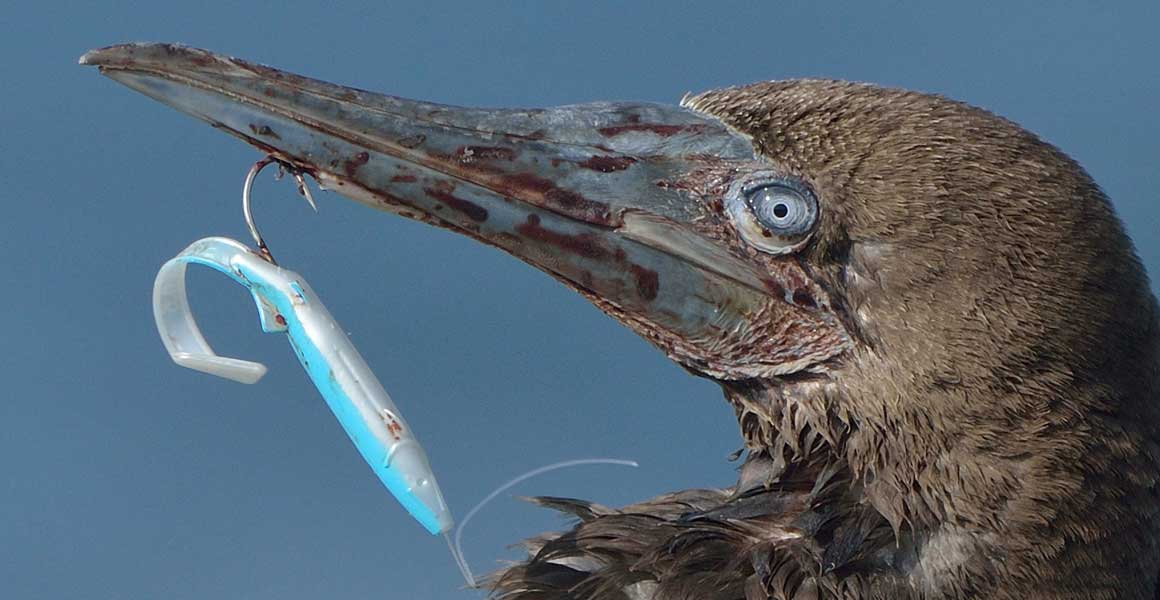
A brown booby bird with a fishing hook caught in its mouth. The dried blood around the beak implies it has been suffering for a while. © Michiel Oversteegen/ Birdwatching in Arubaopens in a new window
Birds and Debris was set up by Dr Alex Bond, Senior Curator of Birds at the Natural History Museum, and collaborators at the Environmental Research Institute at the University of the Highlands and Islands.
The website allows people all over the world to report birds endangered by not only plastic but any type of debris, such as glass, fabric and metal.
Users can upload photos and include details of the animal. They can also choose to be updated about the project's findings.
'Birds act as an important indicator of the extent of plastic pollution, therefore ongoing research is essential,' says Alex.
'Individual records can be impactful on their own. We can start to piece together how big and widespread the problem is, which opens up a variety of ways we can tackle the issue. For example, the findings can feed into future environmental policies around waste management.'
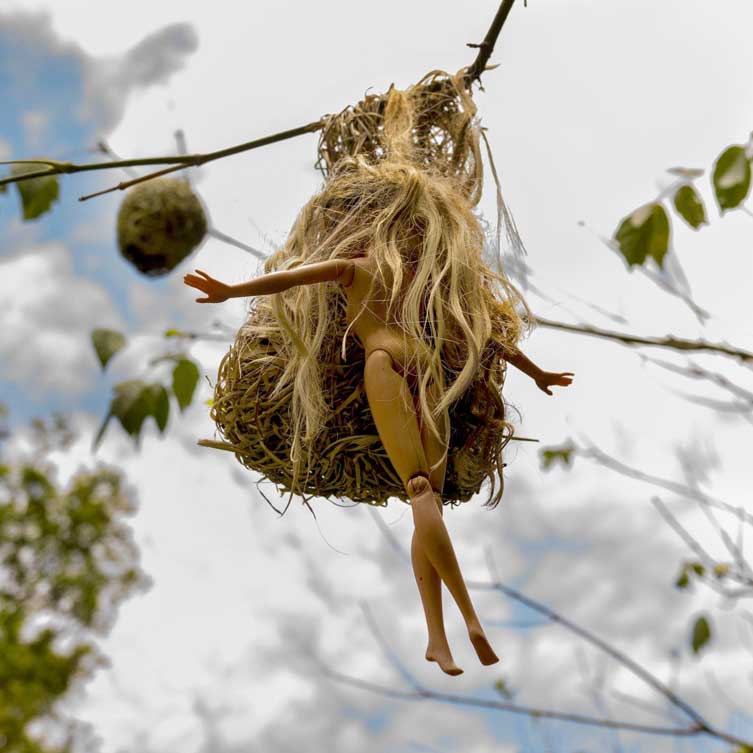
Hair of a Barbie doll woven into the nest of a southern masked weaver in South Africa. © Richard Van Schalkwyk/ Facebookopens in a new window
How does plastic get into the ocean?
More than 90% of plastic in the ocean comes from land-based sourcesopens in a new window, mostly from leaks in waste management systems.
Landfills are usually developed away from residential areas, which means that collected waste travels a long way before being disposed of.
During that time, trucks can leak small quantities of waste or get into accidents, thus contaminating water surfaces.
Other sources include river and offshore dumping and waste disposal from ships, all of which are illegal. Litter left behind by beachgoers also contribute.
Plastic and other waste is carried throughout the oceans for thousands of miles to pollute even the most remote shores.
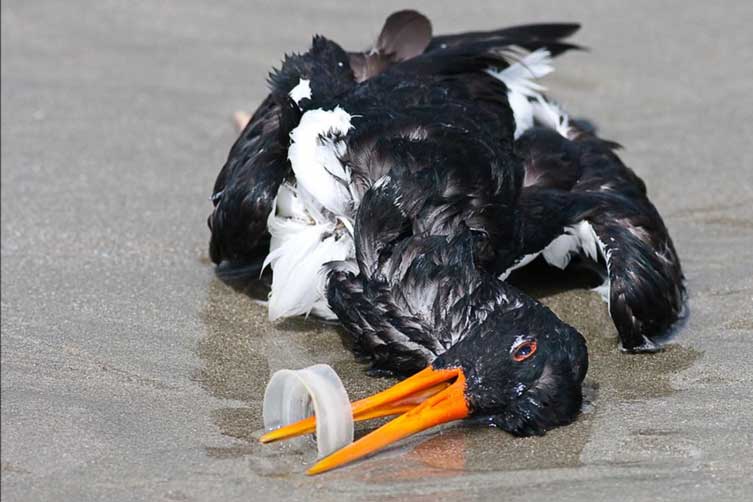
Found on a beach in Scotland, this oystercatcher had a piece of plastic jammed into its beak. When laid on its back, its breast was almost skeletal, suggesting it died of starvation as it could no longer feed. © Craig Nash/ Peregrine's Bird Blogopens in a new window
How does plastic impact birds?
Research shows there is an increase in birds using plastic to build their nests.
Birds can die from accidentally getting tangled in this rubbish, usually because it stops them from moving the way they normally would.
Lack of movement means that birds:
- can pick up infections if injured, as they are unable to clean themselves
- will not be able to feed themselves, leading to starvation
- will become vulnerable to prey
- could die by other means, such as drowning
Birds use sight and smell to identify their prey, so they often mistake floating plastic covered in algae as food.
Once consumed, the plastic can obstruct and physically damage the digestive system, reducing the birds' ability to digest and forage, leading to malnutrition, starvation and death.
The surface of plastic also absorbs toxic chemicals from its environment. When ingested, these toxic chemicals are deposited inside the animal and absorbed into the blood stream.
Over time, this builds up in the tissues and has a detrimental effect on the bird's hormone balance, immune system and ability to reproduce.
What's more, as birds usually regurgitate food to feed their young, the chicks are also consuming toxic plastic before they have even fledged.
In some cases however, the use of plastic in nest building may be a conscious decision. For example, black kites use plastic to show off their dominanceopens in a new window. In other cases, birds may be adapting to their environment and using plastic where natural material is limited.
Knowledge of plastic in nest construction is still limited as most research is done using small sample sizes or a single location. Assessing the true scale of the situation is difficult because the problem is so big.
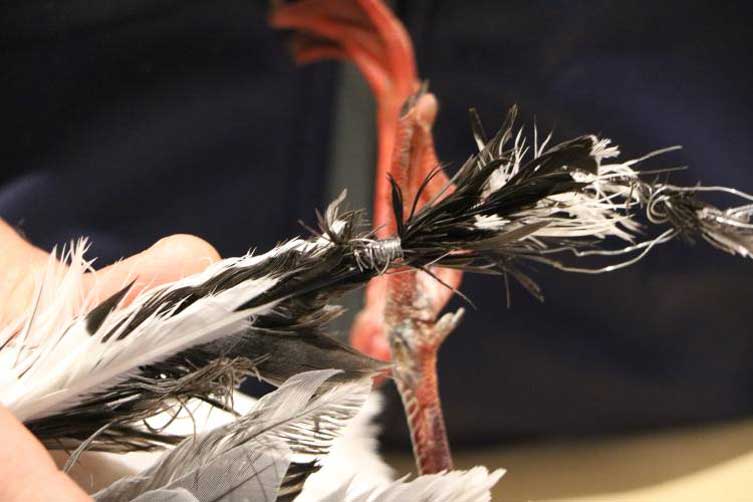
A wire tightly wound around a Hartlaub's gull's wing. Often, the more a bird struggles to free itself, the tighter the noose will become. If the bird loses the function of its wings, it will starve to death over a week. © Devon Bowen/ Two Oceans Aquariumopens in a new window
More research on birds and plastic by Alex
Alex has been working on additional groundbreaking research exploring plastic pollution on seabirds.
In 2019, he went on an expedition with a team of scientists to the isolated Henderson Island located in the eastern South Pacific Ocean, continuing research started in June 2015.
Henderson Island has intrigued scientists for many years with its remarkable biological diversity, including many unique flora and fauna for a tiny island, as well as its pristine condition untouched by humans.
Listed as a UNESCO World Heritage Site in 1988, it is also considered to be one of the world's last two raised ringed coral reefs.
Sadly, the island's three white sand beaches were found littered with the world's highest recorded density of debris, most of which was plastic.
'With no human population nearby, this really highlights the stark reality of how far plastic debris can travel around the world,' says Alex. 'We found things from Asia, South America and even the UK.'
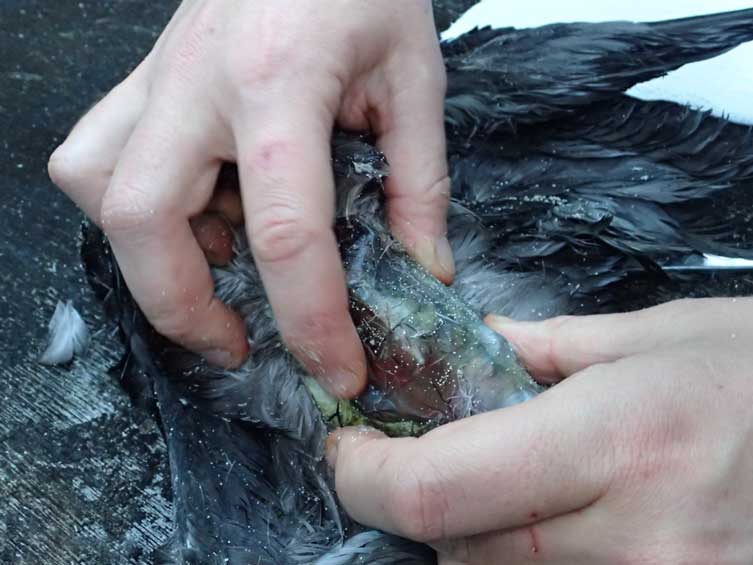
Plastic content inside the stomach of a dead shearwater chick can be seen through the taut skin. Image by Alex Bond.
Another study is investigating the impact of plastic pollution on wedge-tailed and flesh-footed shearwater birds on Lord Howe Island, a UNESCO World Heritage Site off the coast of eastern Australia.
Alex and his colleagues examined the stomach content of dead and live birds found on the beaches, which revealed a shockingly high percentage of plastic. Debris included wheels from toy cars, balloon clips and bottle lids.
They also examined the feathers, blood and tissue damage in the birds' liver cells.
While the obvious conclusion is negative, Alex and his team are still working on finding the different ways plastic impacts birds, as some may not be fatal but still dangerous.
'With the production of plastics increasing exponentially, and an ever-increasing societal awareness of its problems, our ability to pull together information on how it affects wildlife has never been more urgent or more possible,' says Alex.
Now, the public can help scientists like Alex to get to grips with the problem.
Related
- get tips on how to use less plasticopens in a new window
- find out about opportunities to work with Alex
- read Alex's blog, The lab and field

Find Your Climate Action
Taking small, actionable steps can have a big impact when it comes to helping the planet.
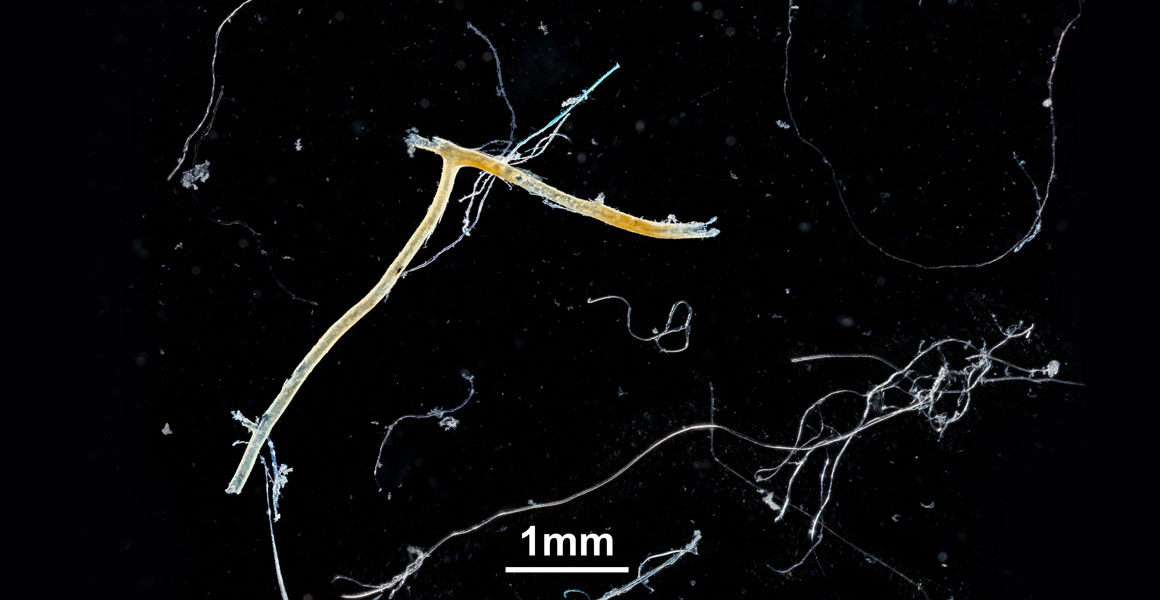

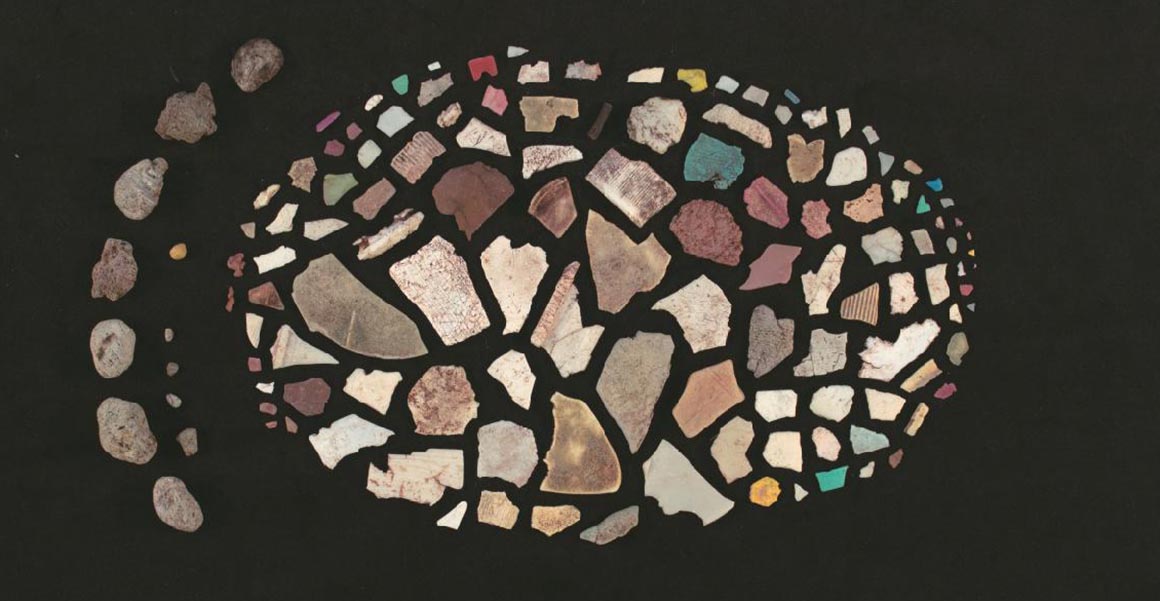

Join our community of planet fixers
Enter your email to get monthly tips on living sustainably as well as articles, events and information to help you become an advocate for our planet. We may occasionally include information about other parts of the Museum or third-party content from our corporate partners and other museums. We will not share your personal details with these third parties. You must be over the age of 13. Privacy notice.
Follow us on social media